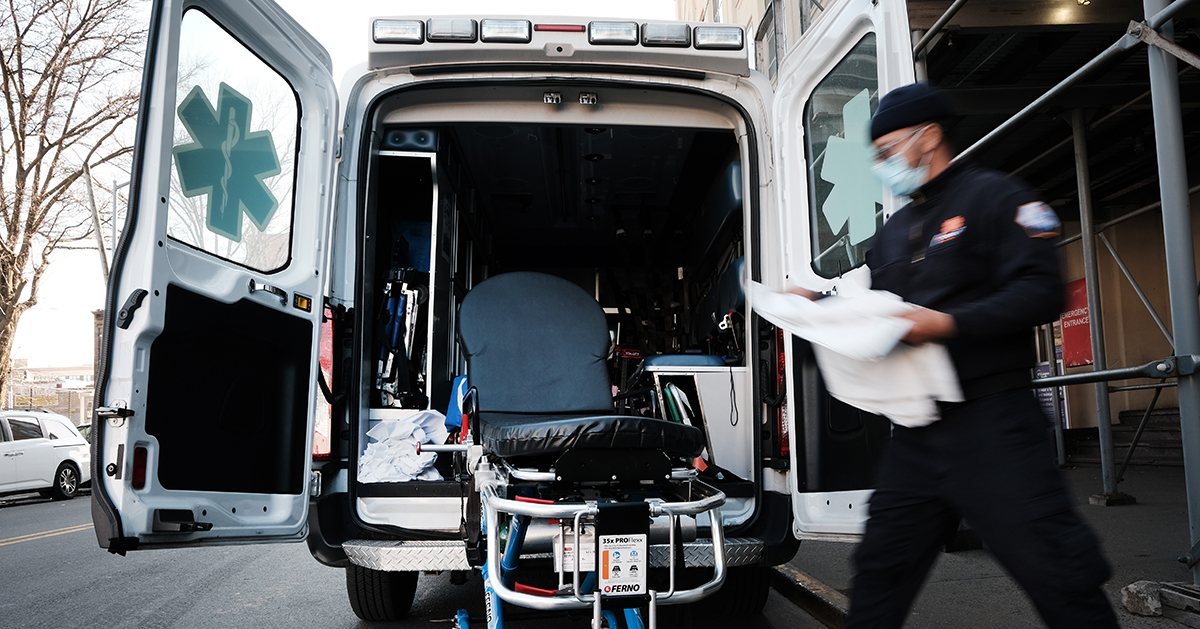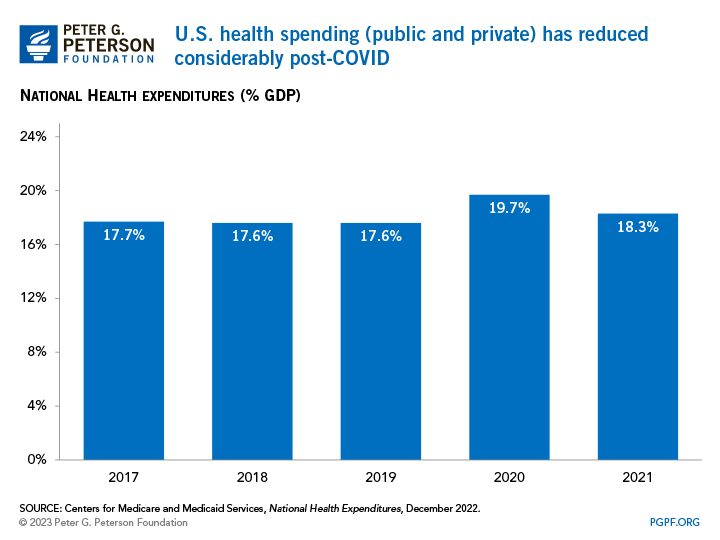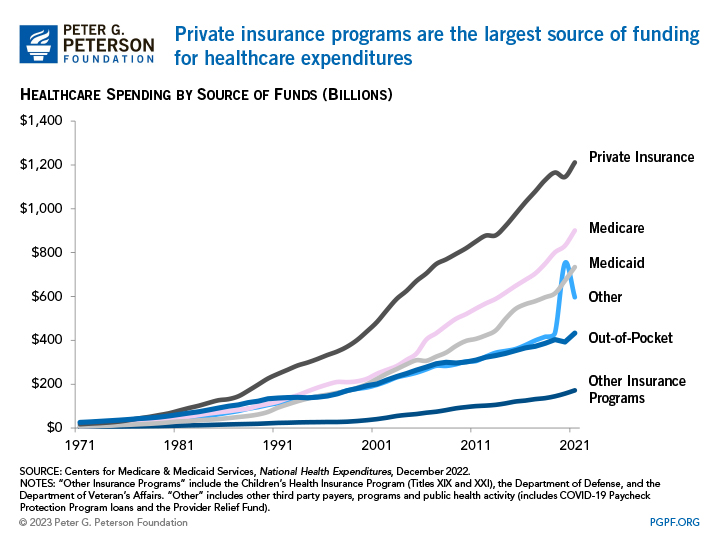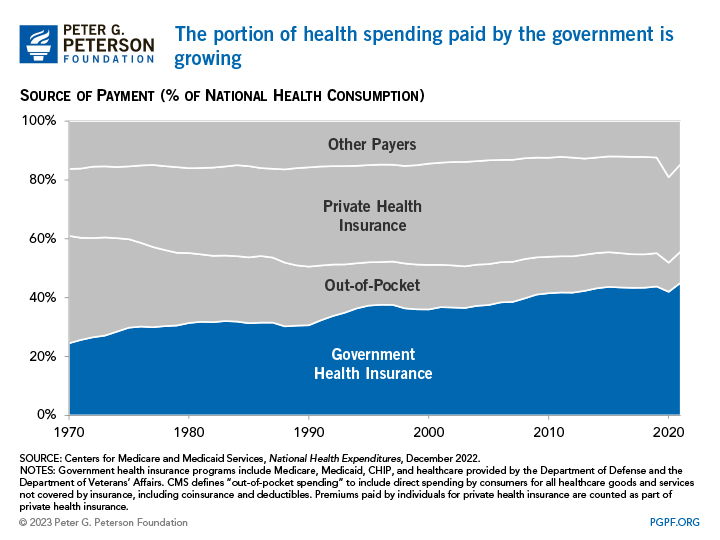You are here
Healthcare Spending in the United States Remains High

Healthcare spending in the United States totaled 18.3 percent of gross domestic product (GDP) in 2021, according to the Centers for Medicare and Medicaid Services (CMS) in their most recent data update. That’s down from 19.7 percent of GDP in 2020, primarily due to an increase in economic growth as well as a decline in federal COVID-19 funding. However, healthcare costs in the United States remain above their pre-pandemic levels, and they remain a primary driver of our unsustainable national debt.

In nominal dollars, U.S. healthcare spending totaled $4.3 trillion in 2021, or about $12,900 per person — an increase of nearly 3.0 percent from the previous year. Spending on healthcare rose in both the public and private sectors in 2021 for these major sources of funds:
- Spending through private health insurance rose by 5.8 percent, making up $1.2 trillion of total healthcare spending in 2021; growth was driven mainly by increases in spending on medical goods and services as utilization and enrollment in private health insurance rose.
- Medicare spending grew by 8.4 percent, totaling $901 billion in 2021, with increases in both the traditional fee-for-service program and Medicare Advantage.
- Medicaid spending rose 9.2 percent to $734 billion, largely due to a 22.3 percent growth in enrollment that is primarily attributable to the temporary provision that Medicaid keep individuals enrolled during the COVID-19 public health emergency (which is slated to end on May 11, 2023).
- Out-of-pocket spending saw a 10.4 percent increase driven by the increases in utilization of medical services and goods following the decrease in use observed in 2020 due to the impact of the COVID-19 pandemic.

The rise in healthcare costs has consequences for the nation’s fiscal outlook, as the amount and share paid by the federal government has been rising over the past several decades. Government spending has grown from $21.8 billion (26.5 percent of total healthcare costs) in 1971, to $1.5 trillion (34.0 percent of total costs) in 2021.

While the decrease in the growth of healthcare spending relative to GDP is a welcome development, healthcare expenditures remain a major contributor to the rise in federal spending and therefore to the structural imbalance driving our debt. As the federal government continues to pay for increasingly larger shares of healthcare, policymakers should pursue reforms that lower costs and increase efficiency in the American healthcare system.
Related: How Does Government Healthcare Spending Differ From Private Insurance?
Image credit: Photo by Getty Images
